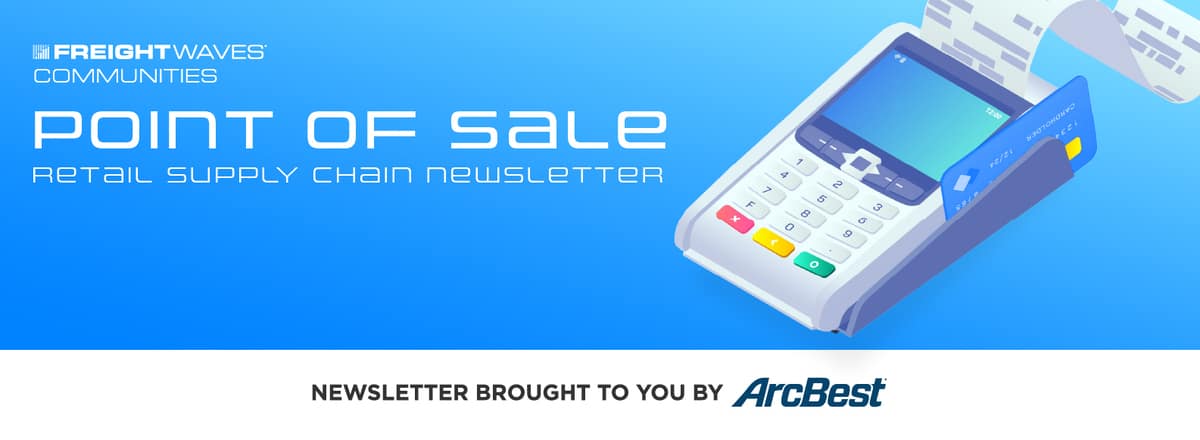
This is an excerpt from Thursday’s (2/18) Point of Sale retail supply chain newsletter sponsored by ArcBest.
Is it crazy that after 25 years of e-commerce, there has been very little innovation when it comes to packaging? Amazon (NASDAQ: AMZN) has led the way toward establishing more sustainable packaging standards with its Frustration-Free Packaging initiative. Since 2015, the initiative has reduced the weight of outbound packaging by 33% and eliminated more than 900,000 tons of packaging material — the equivalent of 1.6 billion shipping boxes.
But the entire process is still 95% the same as it was when e-commerce began. It may be lighter weight, more easily recycled and better utilized, but it’s still single-use, one-way packaging.
Faust, the co-founder of Jet.com and a former SVP at Walmart, believes the answer to the opening question is a resounding yes. That’s why he recently launched Olive, a delivery consolidation service that bundles e-commerce orders into a single, weekly shipment delivered in a reusable “shipper.”
How’s it work? Shoppers simply download the Olive iOS app or a Chrome extension and shop exactly as they typically would. Upon checkout, the Olive extension automatically inputs the Olive delivery address and items are shipped directly to the Olive consolidation facility. The items are combined into a weekly shipment and held until the designated delivery day.
Olive has linked up with hundreds of different apparel brands and retailers including Adidas, Anthropologie, Everlane, Hugo Boss, Outdoor Voices and Saks Fifth Avenue. Those brands pay Olive a commission as a percentage of sales for the transactions Olive customers make on their sites.
Because retailers are shipping products like normal, all that packaging is still being used, but at least the customer isn’t required to dispose of it and it’s more likely to be recycled if Olive handles disposal. Faust said eventually Olive could work more closely with retailers to reduce or eliminate that packaging.
In the meantime, he said the real environmental impact comes from “the consolidation of deliveries into fewer last-mile stops.” Olive references research from Bain & Co., which estimates that doubling the average number of items in a delivery reduces the per-item carbon footprint by 30%.

But the environmental impact is not what Faust believes will drive adoption. He argues the convenience of the return process via Olive will be appealing to shoppers who aren’t attracted to the environmental benefits. Olive’s “shippers” are built for two-way movement, meaning if an Olive shopper wants to return anything they ordered, simply place it in the shipper, flip the shipping label over and set it out on the delivery day.
“In order to have the largest environmental impact, the selling point can’t be the environmental impact,” he said. That’s not to say the environmental impact cannot be massive if Olive gains widespread adoption. The company estimates 75% of carbon emissions attributed to e-commerce come from last-mile delivery and single-use packaging.
It won’t be an easy feat to adjust consumers’ expectations away from same-day, next-day, two-day deliveries, but Olive believes the oil is worth the press. Faust acknowledged that Olive runs counter to the “arms race” between Amazon and other e-commerce services working to deliver purchases as quickly as possible. But he referred to consumer surveys the company has conducted that indicated shoppers were willing to wait a little longer in exchange for other benefits.
He and Olive are not alone in this line of thinking.
Another example of incentives being offered for slower delivery comes from a collaborative study between MIT and Mexican department store retailer Coppel. This study of real-world transactions showed shoppers could be incentivized to choose a slower delivery speed through either an economic or environmental incentive.
Outdoor apparel retailer Timberland has trialed a similar incentive-driven initiative, with 14% of its consumers choosing a slower delivery speed in return for the retailer planting a tree on their behalf.
But it may not even take an incentive to change consumers. Susy Schöneberg, founder and head of Flexport.org, told me in an interview this week that she believes just educating customers on the hidden costs of delivery may be enough to change consumer behavior. She used online apparel shopping as an example of how retailers can show the emissions reduction of slower delivery or by choosing a different version of the item.
This is the thread Olive is pulling on. Olive believes it can attract more responsible, sustainable shoppers by educating them of the hidden costs of daily, disparate final-mile deliveries. And it believes the convenient returns process will attract those more focused on personal utility.
Olive is smart to start with apparel, which does not have the same expectation of speed that other categories like consumables and electronics do. Also, the company believes that the items cost enough to make the delivery economics work out, even if a customer only orders one product in a week.
Whether that is true will be dependent on adoption and how dense of a delivery network Olive can achieve. But the team is led by an innovative e-commerce veteran with 20 years of experience running highly successful online retail brands.
Big problems take audacious solutions. I’ll be watching Olive.
Like what you’ve read and want more e-commerce and retail supply chain news and insights? Try Point of Sale: https://web.freightwaves.com/point-of-sale










